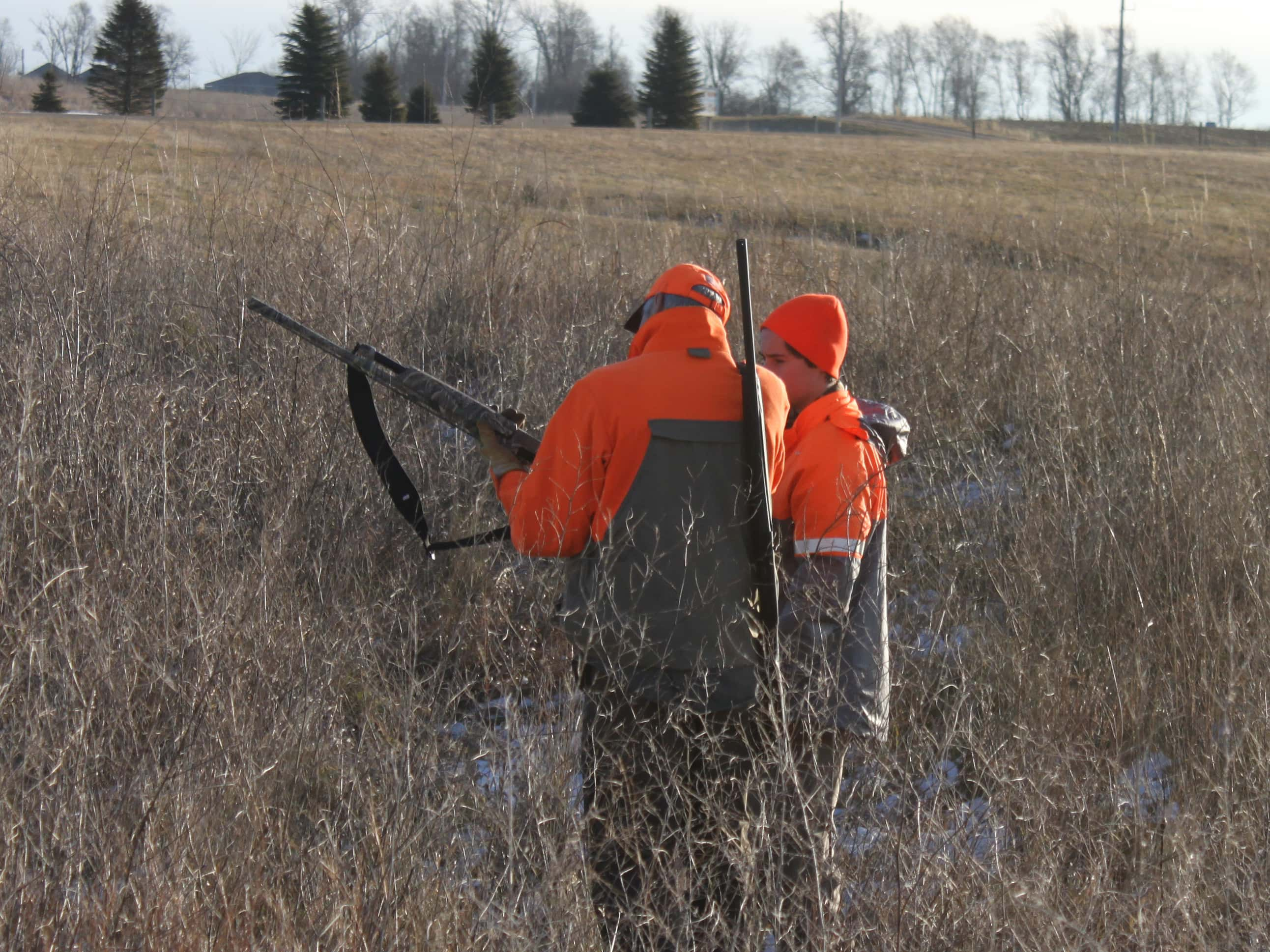
Photo: Each new hunter enters the field with a better understanding of safety, sportsman responsibilities and wildlife identification than ever before. More than 650,000 take an IHEA-related course each year, ensuring that tradition continues. Simonson Photo.
By: Nick Simonson
For many hunters, firearms deer season is the end-all-be-all outdoor experience; a two week span so rich in tradition that many would rather miss Christmas than their time in the deer blind or the tree stand.
It would make sense then, that for the International Hunters Education Association (IHEA) the deer opener, as it cascades southward across the country over the next few weeks, is a safety focal point for the organization. However, the association’s now 70-year quest for educated and safe hunters extends far beyond the reach of the excitement and mystique of opening day.
Instead, developing demographics of hunters, changing demands on hunters education programs, and shifting methods in the field are driving a new view of safety for the growing ranks of those taking hunters education throughout the nation and throughout the year.
The IHEA is the largest hunter education group in the U.S. with an international reach, affiliating with all 50 state wildlife agencies to coordinate materials and instruction to certify new hunters in firearms safety, bowhunting safety, care for harvested game, sustainable hunting, good landowner relations, proper species identification and more.
Each year, approximately 650,000 new hunters join the ranks of sportsmen as a result of an IHEA-approved course, and more than 55,000 volunteer instructors help make those programs happen, and the demand continues to grow to the point where the organization is seeking more volunteer instructors, according to David Allen, IHEA’s Executive Director.
“The good news is there’s more demand, there’s more youth that are wanting to enter the hunting culture and wanting to take hunters ed – and it’s not just youth, I should point out that there’s a real growing trend of young adults that are going through hunters ed…people who want to harvest their own food and eat organically and they just want to participate in that process,” he explained, adding with the increased demand, mentor supply is often short, and interested people should contact their state wildlife agency or hunters education administrators to get involved; “there’s a real need for more volunteer instructors.”
While Baby Boomers represent a large portion of the hunters who are departing sportsmen ranks across the country, Allen is reassured by the steady and slightly uptrending number of people taking hunters education courses each year that sportsmen will continue to have the representation needed in the field and for future propagation of the North America Hunting Model and conservation efforts which will benefit wildlife and preserve the hunting tradition, but most importantly continue to keep it safe, as they have done over the past 70 years.
According to a 2018 study by the National Safety Counsel, accidental firearm deaths and injuries dropped from a high of nearly 1,000 incidents in 1997, to less than 500 in 2017, with a small fraction of those related to hunters. By Allen’s take, hunters education – with over 40 million graduates since the program’s inception in 1949 – has a lot to do with that decline.
“I believe, and I know all of our 50 states’ wildlife agencies believe, and we have 55,000-plus volunteer hunter ed instructors across the country, and they believe in those common sense rules of watch where you’re pointing that gun, know what your target is, don’t have a shell in the chamber, be careful, be cautious and take your time,” said Allen “we have generations today of hunters that are on the ground, there’s literally millions of hunters in the field these days with firearms and the incident rate is so low that it’s a testament to our hunting culture,” he concluded.
In light of high-profile criminal incidents involving intentional firearm misuse, Allen and the executive staff of IHEA are taking on new views in response to publicized events and are open to a changing environment and stemming the backlash against responsible, non-offending firearm owners and hunters. With calls for better addressing of mental health issues in the U.S. in relation to firearm ownership and use, the organization is open to the next steps and the evolution of its curriculum.
“The whole conversation about mental health is one that is growing and we’re aware of it and we’re certainly wide open to more discussion and playing a role if we can have a positive effect,” Allen advised.
While the number of accidental firearm injuries is on the decline, Allen does have concerns about a hunting-related injury that is on the uptick. Improper treestand use and resulting falls which can cause paralysis and even death are on the rise as more hunters make use of elevated hunting positions. The solution, in Allen’s eyes, and as stressed by the organization’s bowhunting safety course, is simple.
“Have a safety harness,” he stressed in point-blank fashion, “the number of people that try to use those types of hunting instruments and don’t wear safety harnesses and don’t use them properly is astronomical and it’s crazy,” he added.
Adapting to a changing hunting landscape and tactics, public perception of firearms, and working with partnering agencies across the country are all part of the process as IHEA looks back on its first 70 years. Allen is optimistic that recruitment of new hunters will remain strong, thanks to growing archery and clay target programs in schools along with a needed connection by many to return to the outdoors for both the food and recreation that hunting provides.
For more information on the IHEA and its efforts to promote hunters education, visit IHEA-USA.org. For a continuously updating list of hunters education courses in North Dakota, visit: gf.nd.gov/education.
